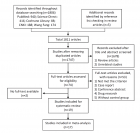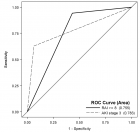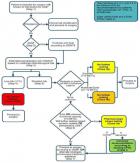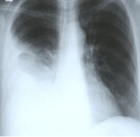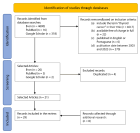Abstract
Review Article
The Influence of Gravity on the Frequency of Processes in Various Geospheres of the Earth. Biogenic and Abiogenic Pathways of Formation of HC Accumulations
AA Ivlev*
Published: 09 July, 2024 | Volume 8 - Issue 1 | Pages: 052-056
Based on the results obtained in the study of the interaction of geological and biosphere processes, we found out that there is a close relationship between them. It was also found that the gravity of the bodies of the solar system on the Earth plays a significant role in the above relationship. The effect of gravity was demonstrated on the movement of lithosphere plates, on the processes in the atmosphere and hydrosphere, on related climatic cycles, and the biosphere processes, including "living" organisms' evolution and their mass extinctions. The periodicity of these processes due to gravity is shown. It is expressed in the alternation of short-term orogenic periods of the beginning of the processes with long-term geosynclinal periods of their development and completion. Both periods constitute the repetitive orogenic cycles. The relationship of the cycles with the evolution of photosynthesis, as well as with related Organic Matter (OM) accumulation in sediments after mass extinction of organisms, including OM transformation leading to the formation of Hydrocarbon (HC) accumulations, is shown. Biogenic processes accounting for the accumulation and transformation of organic matter in sediments constitute the biogenic pathway of the formation of hydrocarbon accumulations. It is shown that the influence of gravity extends to the processes in the inner geospheres, including the movement of magma in the asthenosphere under the lithosphere shell, to the movement of hydrogen gas coming from the Earth's core, combining with volatile compounds of elements present in magma, as well as to the rifting process. It is shown that rifting processes lead to the formation of gaseous HC accumulations and constitute a pathway called abiogenic. The obtained results shed light on the peculiarities of the formation of HC accumulations by biogenic and abiogenic pathways, allowing prediction of their chemical characteristics. This is essential when searching for oil and gas and planning exploration works.
Read Full Article HTML DOI: 10.29328/journal.acee.1001067 Cite this Article Read Full Article PDF
Keywords:
Gravity; Lithosphere plates; Orogenic and geosynclinal periods; Orogenic cycles; Photosynthesis; Accumulation of shale enriched in OM; Rifting; Magma; Hydrogen degassing; Biogenic and abiogenic pathways of formation of hydrocarbon accumulations
References
- Ivlev AA. Biogenic and abiogenic origin of hydrocarbon (HC) accumulations in Nature. Geology of Oil and Gas No. 4 2024.
- Flint RF. The Earth and its history. 1st New York, Norton. 1973. ISBN 10: 0393093778 / ISBN 13: 9780393093773. Available from: https://www.abebooks.com/first-edition/Earth-History-Flint-Richard-F-Norton/6497887275/bd
- Ivlev AA. A New View on the Global Redox-Cycle of Biosphere Carbon C-Journal of Carbon Research. 2023;9:53:1-21. Available from: https://www.mdpi.com/2311-5629/9/2/53
- Ivlev AA. Dynamic Interplay: Unveiling the Biosphere-Geosphere Nexus in Carbon Cycling. Geosphere. 2024;24(1):23-37. Available from: https://socialscienceresearch.org/index.php/GJHSS/article/view/103964
- Ivlev AA. Formation of strata rich in organic matter in the light of a new model of the global carbon cycle. Geol Oil Gas. 2019;(5):83-87.
- Ivlev AA. On the Origin of “Black Shales” in the Framework of the Global Redox Cycle Model of Biosphere Carbon. Geol Earth Mar Sci. 2023;5(2):1-4. Available from: https://globaljournals.org/GJHSS_Volume24/E-Journal_GJHSS_(B)_Vol_24_Issue_1.pdf
- O¨zyurt M. Geochemistry of the Aptian bituminous limestones in Gumus'hane area, Eastern Black Sea region: new insight into paleogeography and paleoclimate conditions. Acta Geochim. 2023;42:971-987. Available from: https://doi.org/10.1007/s11631-023-00623-9
- Marakushev AA, Marakushev SA. Formation of oil and gas fields. Lithology and minerals. 2008; 5:505-521. Available from: https://link.springer.com/article/10.1134/S0024490208050039
- Marakushev AA, Marakushev SA. Hydrogen respiration of the Earth – its origin, geological and biological consequences. Altern Energy Ecol. 2008;57(1):156-174. Available from: https://www.diva-portal.org/smash/get/diva2:1819155/FULLTEXT01.pdf
- Kharakhinov VV. Deep breathing of the Earth and oil and gas potential. Towards a paradigm shift in oil and gas geology. Geology of oil and gas. 2024.
- Umbgrove JHP. The Pulse of the Earth, 2nd ed. M. Nijhoff The Hague. 1947; 358.
- Vernadsky VI. Essays on geochemistry. M Nauka. 1983; 422.
- Larin NV. The hypothesis of the initial hydride Earth M. Nedra. 1975; 100.
- Larin NV. Our Earth (origin, structure, composition, and development of the initially Hydridic Earth: the New Geology of Our Primordially Hydrogen-rich Planet. M. Agar. 242s. 1993.
- Belokon TV. Structure and oil and gas potential of the Riphean-Vendian deposits of the east of the Russian Perm platform. Perm: Star. 2001; 217.
- Beskrovny NS, Gemp SD, Schwartz TV. Deep faults of Western Turkmenistan and their role in the formation of oil deposits. Leningrad: Gostoptehizdat; 1963; 185.
- Vinogradov AP. Meteorites and the Earth's crust. Izv AN USSR. Ser Geol. 1959;(10):1959.
- Vinogradov AP. On the origin of the matter of the Earth's crust. Geochemistry. 1961;1.
- Vinogradov AP. The origin of the shells of the Earth. Izv. AN USSR. Ser. Geologicheskaya. 1962;11.
- Yudovich YE, Ketris MP. Carbon isotope ratios in the stratosphere and biosphere. Biosfera. 2010;2:231–247.
- Twenhofel WH. Environments of origin black shales//Amer. Ass. Petrol. Geol. Bull. 1939; 23:8:1178-1198. Available from: https://archives.datapages.com/data/bulletns/1938-43/data/pg/0023/0008/1150/1178.htm
- Chemist's Handbook "21." Chemistry and chemical technology market.yandex.ru
- Chemist's Handbook. General information. The structure of matter. Properties of the most important substances. 1966;1: 2nd ed.
- List of natural gas fields [Internet]. Wikipedia, The Free Encyclopedia. [Updated 2 April 2024 06:17 UTC; Retrieved: 8 July 2024 05:58 UTC] https://wikipedia.org (list of world gas fields); https://en.wikipedia.org/w/index.php?title=List_of_natural_gas_fields&oldid=1216829435, Page Version ID: 1216829435.
- https://studfile.net /preview/6581936/page16 (chemical composition of gas fields)
- htips: // florcvet.ru/sredniy-sostav-gaza/
- Wikipedia contributors. Associated petroleum gas [Internet]. Wikipedia. 2023. Available from: https://en.wikipedia.org/wiki/Associated_petroleum_gas Magazine.neftegaz.ru "10, 2013, associated-petroleum-gas "
- https// Wikipedia "The component composition of APG "
- https://dl.booksee.org/genesis/792000/4fc6adb8eeff05879e3942221ba0c225/_as/[A._Pisarev,_I.V._Cvetkov,_E.D._Marenkov,_S.S._Y(BookSee.org)
- Prinzhofer AA, Huc AY. Genetic and post-genetic molecular and isotopic fractionations in natural gases. Chem Geol. 1995 Dec 1;126(3-4):281-290. Available from: https://doi.org/10.1016/0009-2541(95)00123-9
- Global hydrogen flows [Internet]. Hydrogen Council. 2024. Available from: https://hydrogencouncil.com/global-hydrogen-flows/.
- ru›journal/2142/article/35672/
Figures:
Similar Articles
-
The Influence of Gravity on the Frequency of Processes in Various Geospheres of the Earth. Biogenic and Abiogenic Pathways of Formation of HC AccumulationsAA Ivlev*. The Influence of Gravity on the Frequency of Processes in Various Geospheres of the Earth. Biogenic and Abiogenic Pathways of Formation of HC Accumulations. . 2024 doi: 10.29328/journal.acee.1001067; 8: 052-056
Recently Viewed
-
Advancing Forensic Approaches to Human Trafficking: The Role of Dental IdentificationAiswarya GR*. Advancing Forensic Approaches to Human Trafficking: The Role of Dental Identification. J Forensic Sci Res. 2025: doi: 10.29328/journal.jfsr.1001076; 9: 025-028
-
Scientific Analysis of Eucharistic Miracles: Importance of a Standardization in EvaluationKelly Kearse*,Frank Ligaj. Scientific Analysis of Eucharistic Miracles: Importance of a Standardization in Evaluation. J Forensic Sci Res. 2024: doi: 10.29328/journal.jfsr.1001068; 8: 078-088
-
Sinonasal Myxoma Extending into the Orbit in a 4-Year Old: A Case PresentationJulian A Purrinos*, Ramzi Younis. Sinonasal Myxoma Extending into the Orbit in a 4-Year Old: A Case Presentation. Arch Case Rep. 2024: doi: 10.29328/journal.acr.1001099; 8: 075-077
-
Toxicity and Phytochemical Analysis of Five Medicinal PlantsJohnson-Ajinwo Okiemute Rosa*, Nyodee, Dummene Godwin. Toxicity and Phytochemical Analysis of Five Medicinal Plants. Arch Pharm Pharma Sci. 2024: doi: 10.29328/journal.apps.1001054; 8: 029-040
-
Antibacterial Screening of Lippia origanoides Essential Oil on Gram-negative BacteriaRodrigo Marcelino Zacarias de Andrade, Bernardina de Paixão Santos, Roberson Matteus Fernandes Silva, Mateus Gonçalves Silva*, Igor de Sousa Oliveira, Sávio Benvindo Ferreira, Rafaelle Cavalcante Lira. Antibacterial Screening of Lippia origanoides Essential Oil on Gram-negative Bacteria. Arch Pharm Pharma Sci. 2024: doi: 10.29328/journal.apps.1001053; 8: 024-028.
Most Viewed
-
Evaluation of Biostimulants Based on Recovered Protein Hydrolysates from Animal By-products as Plant Growth EnhancersH Pérez-Aguilar*, M Lacruz-Asaro, F Arán-Ais. Evaluation of Biostimulants Based on Recovered Protein Hydrolysates from Animal By-products as Plant Growth Enhancers. J Plant Sci Phytopathol. 2023 doi: 10.29328/journal.jpsp.1001104; 7: 042-047
-
Sinonasal Myxoma Extending into the Orbit in a 4-Year Old: A Case PresentationJulian A Purrinos*, Ramzi Younis. Sinonasal Myxoma Extending into the Orbit in a 4-Year Old: A Case Presentation. Arch Case Rep. 2024 doi: 10.29328/journal.acr.1001099; 8: 075-077
-
Feasibility study of magnetic sensing for detecting single-neuron action potentialsDenis Tonini,Kai Wu,Renata Saha,Jian-Ping Wang*. Feasibility study of magnetic sensing for detecting single-neuron action potentials. Ann Biomed Sci Eng. 2022 doi: 10.29328/journal.abse.1001018; 6: 019-029
-
Pediatric Dysgerminoma: Unveiling a Rare Ovarian TumorFaten Limaiem*, Khalil Saffar, Ahmed Halouani. Pediatric Dysgerminoma: Unveiling a Rare Ovarian Tumor. Arch Case Rep. 2024 doi: 10.29328/journal.acr.1001087; 8: 010-013
-
Physical activity can change the physiological and psychological circumstances during COVID-19 pandemic: A narrative reviewKhashayar Maroufi*. Physical activity can change the physiological and psychological circumstances during COVID-19 pandemic: A narrative review. J Sports Med Ther. 2021 doi: 10.29328/journal.jsmt.1001051; 6: 001-007

HSPI: We're glad you're here. Please click "create a new Query" if you are a new visitor to our website and need further information from us.
If you are already a member of our network and need to keep track of any developments regarding a question you have already submitted, click "take me to my Query."







